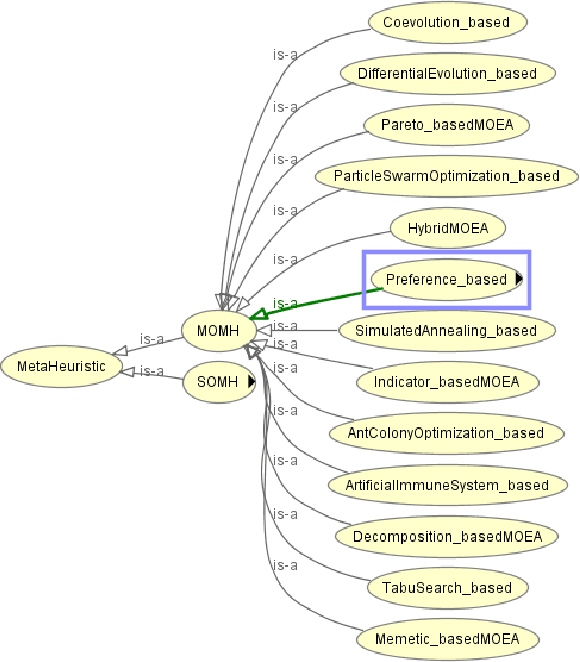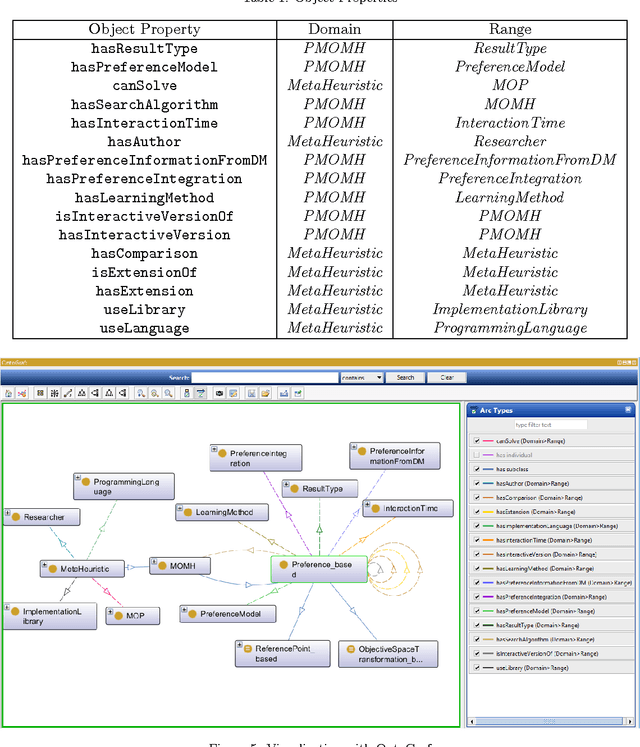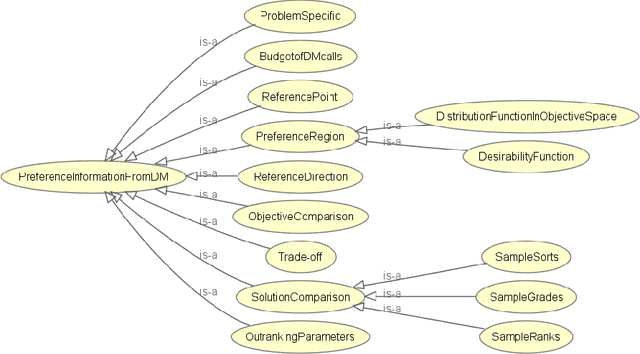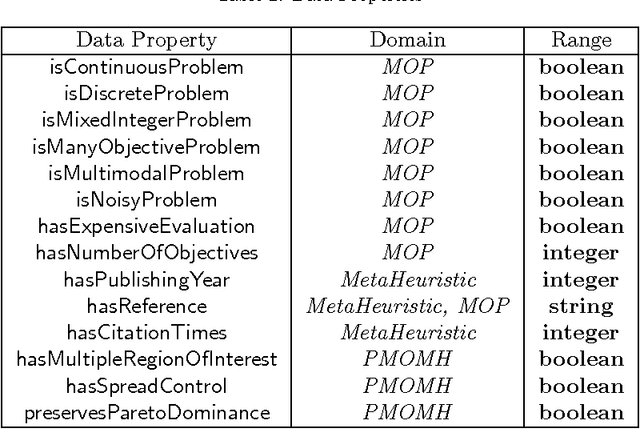Iryna Yevseyeva
An Ontology of Preference-Based Multiobjective Metaheuristics
Mar 10, 2017



Abstract:User preference integration is of great importance in multi-objective optimization, in particular in many objective optimization. Preferences have long been considered in traditional multicriteria decision making (MCDM) which is based on mathematical programming. Recently, it is integrated in multi-objective metaheuristics (MOMH), resulting in focus on preferred parts of the Pareto front instead of the whole Pareto front. The number of publications on preference-based multi-objective metaheuristics has increased rapidly over the past decades. There already exist various preference handling methods and MOMH methods, which have been combined in diverse ways. This article proposes to use the Web Ontology Language (OWL) to model and systematize the results developed in this field. A review of the existing work is provided, based on which an ontology is built and instantiated with state-of-the-art results. The OWL ontology is made public and open to future extension. Moreover, the usage of the ontology is exemplified for different use-cases, including querying for methods that match an engineering application, bibliometric analysis, checking existence of combinations of preference models and MOMH techniques, and discovering opportunities for new research and open research questions.
Multiobjective Optimization of Classifiers by Means of 3-D Convex Hull Based Evolutionary Algorithm
Dec 18, 2014



Abstract:Finding a good classifier is a multiobjective optimization problem with different error rates and the costs to be minimized. The receiver operating characteristic is widely used in the machine learning community to analyze the performance of parametric classifiers or sets of Pareto optimal classifiers. In order to directly compare two sets of classifiers the area (or volume) under the convex hull can be used as a scalar indicator for the performance of a set of classifiers in receiver operating characteristic space. Recently, the convex hull based multiobjective genetic programming algorithm was proposed and successfully applied to maximize the convex hull area for binary classification problems. The contribution of this paper is to extend this algorithm for dealing with higher dimensional problem formulations. In particular, we discuss problems where parsimony (or classifier complexity) is stated as a third objective and multi-class classification with three different true classification rates to be maximized. The design of the algorithm proposed in this paper is inspired by indicator-based evolutionary algorithms, where first a performance indicator for a solution set is established and then a selection operator is designed that complies with the performance indicator. In this case, the performance indicator will be the volume under the convex hull. The algorithm is tested and analyzed in a proof of concept study on different benchmarks that are designed for measuring its capability to capture relevant parts of a convex hull. Further benchmark and application studies on email classification and feature selection round up the analysis and assess robustness and usefulness of the new algorithm in real world settings.
 Add to Chrome
Add to Chrome Add to Firefox
Add to Firefox Add to Edge
Add to Edge